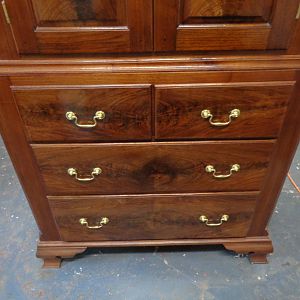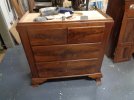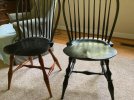I’m intrigued by the reversibility and other benefits of hide glue. I just finished my first hide glue project and learned a few things and generated some questions.
I started with liquid hide glue, specifically Old Brown Glue. I assumed it can be used right out of the bottle but then the instructions said to heat it first. So I used a glass jar in a hot plate water bath and that worked pretty well. Is that really necessary or is it usable at room temperature out of the bottle?
So now I’m thinking if I have to work with heated glue I might as well go right to mixing it myself with purchased glue granules. Are there any advantages to using that type rather than the liquid? Are there any major disadvantages?
Christopher Schwarz has published some recipes for making hide glue from grocery store Knox gelatin, but that costs per pound almost as much as granules so I haven’t tried it. Does anyone have any experience with this?
Have any other hide glue experience or recommendations? I’d love to hear about it, especially for chair making.
Thanks for your input
I started with liquid hide glue, specifically Old Brown Glue. I assumed it can be used right out of the bottle but then the instructions said to heat it first. So I used a glass jar in a hot plate water bath and that worked pretty well. Is that really necessary or is it usable at room temperature out of the bottle?
So now I’m thinking if I have to work with heated glue I might as well go right to mixing it myself with purchased glue granules. Are there any advantages to using that type rather than the liquid? Are there any major disadvantages?
Christopher Schwarz has published some recipes for making hide glue from grocery store Knox gelatin, but that costs per pound almost as much as granules so I haven’t tried it. Does anyone have any experience with this?
Have any other hide glue experience or recommendations? I’d love to hear about it, especially for chair making.
Thanks for your input




